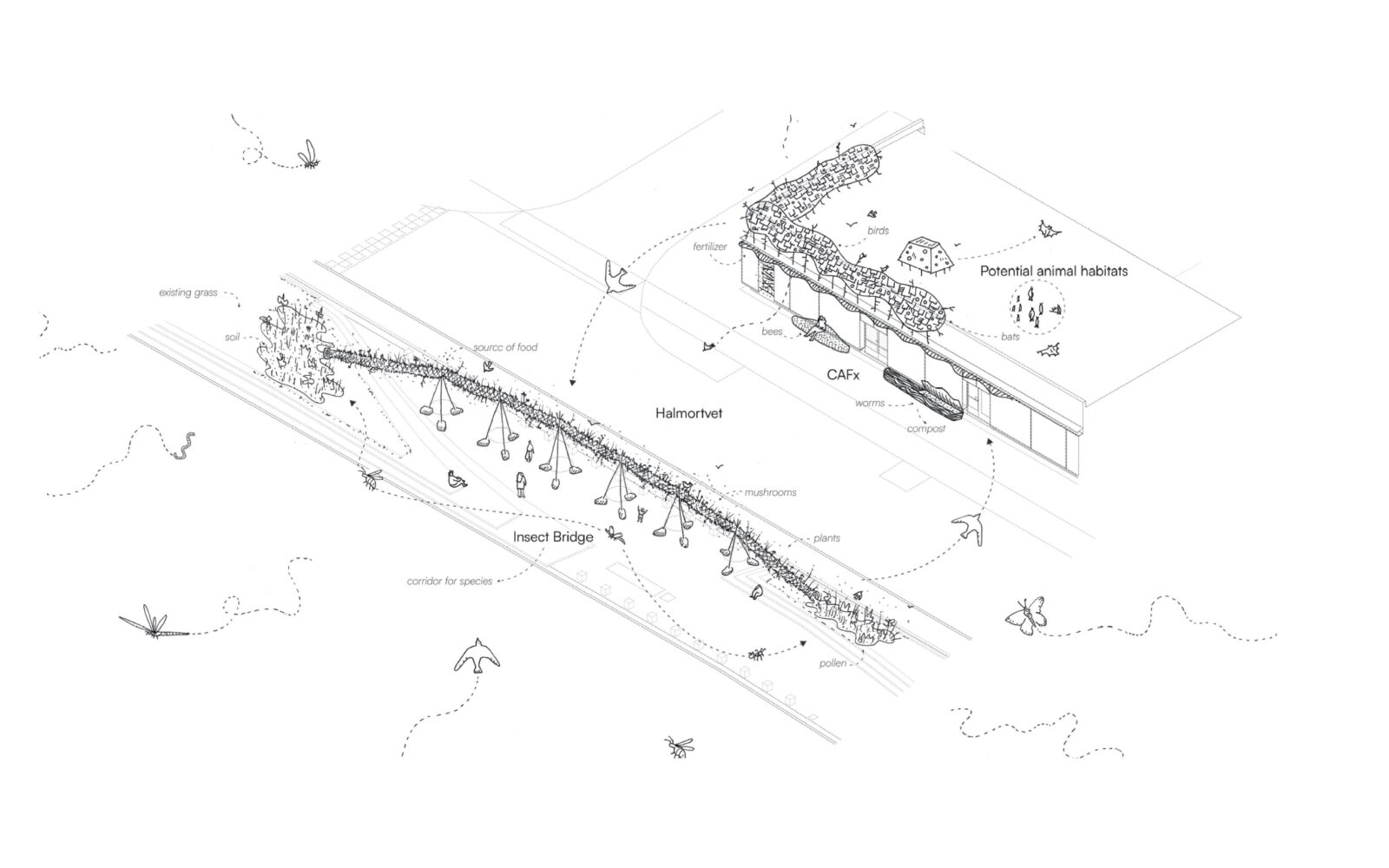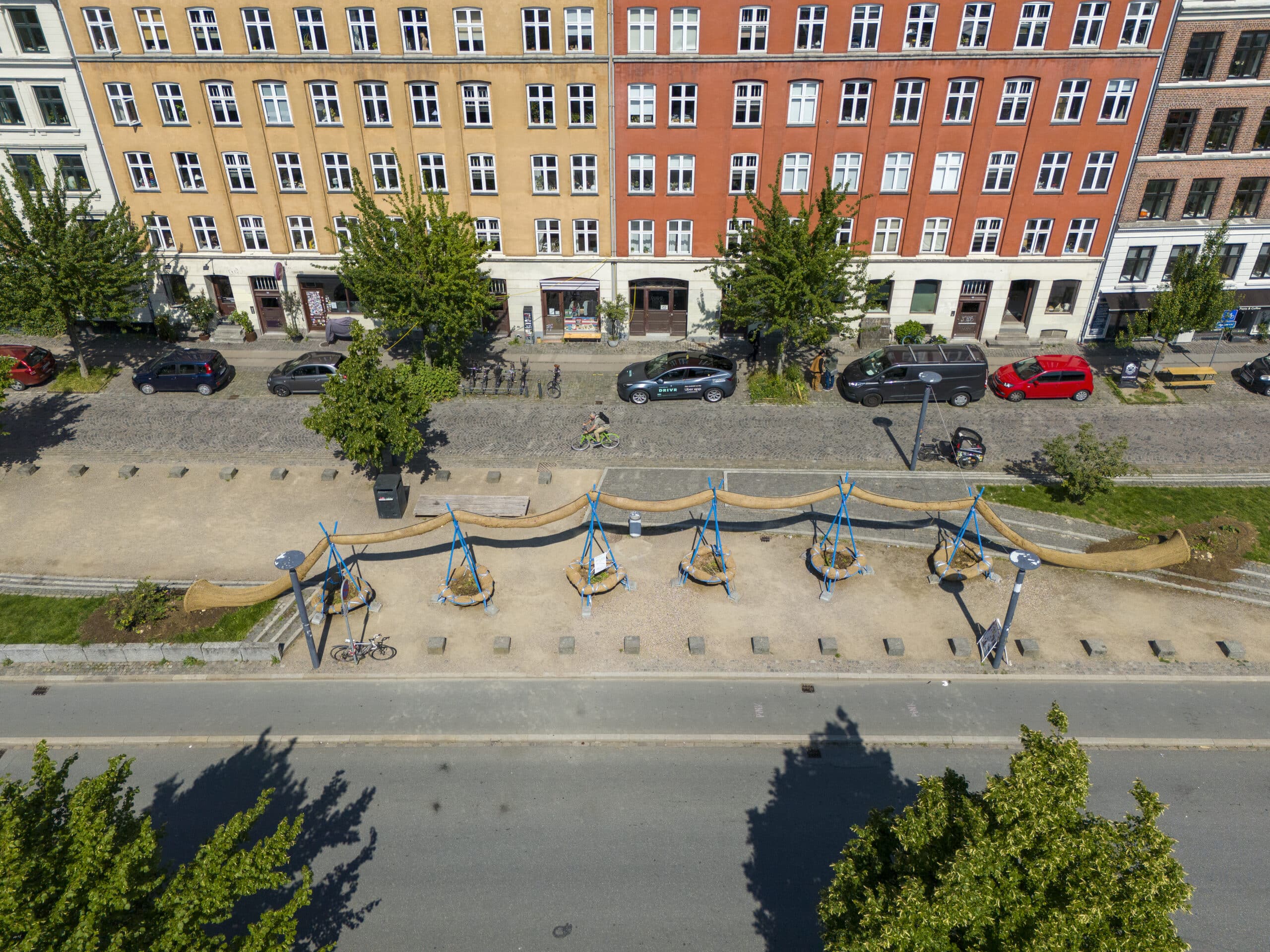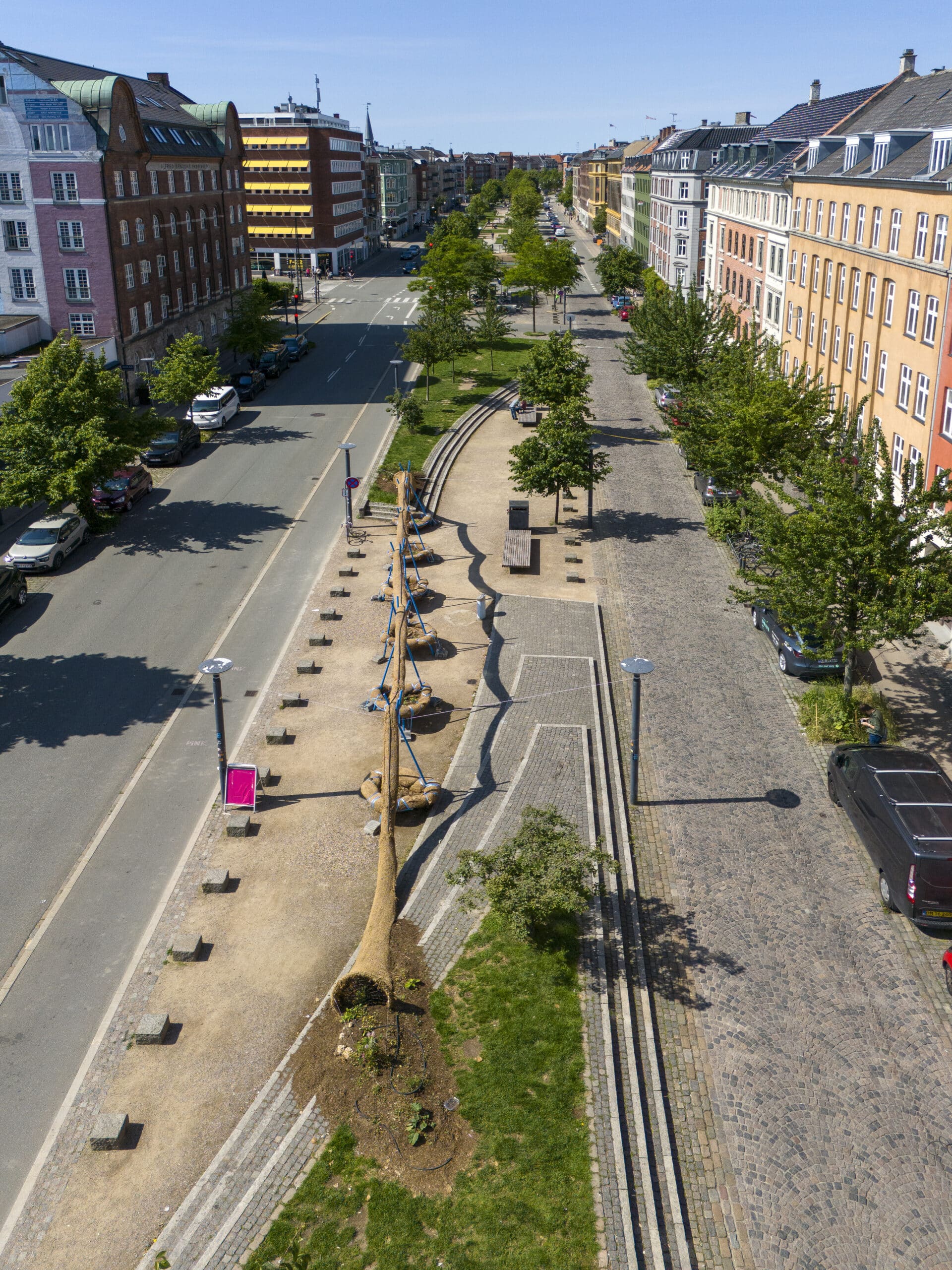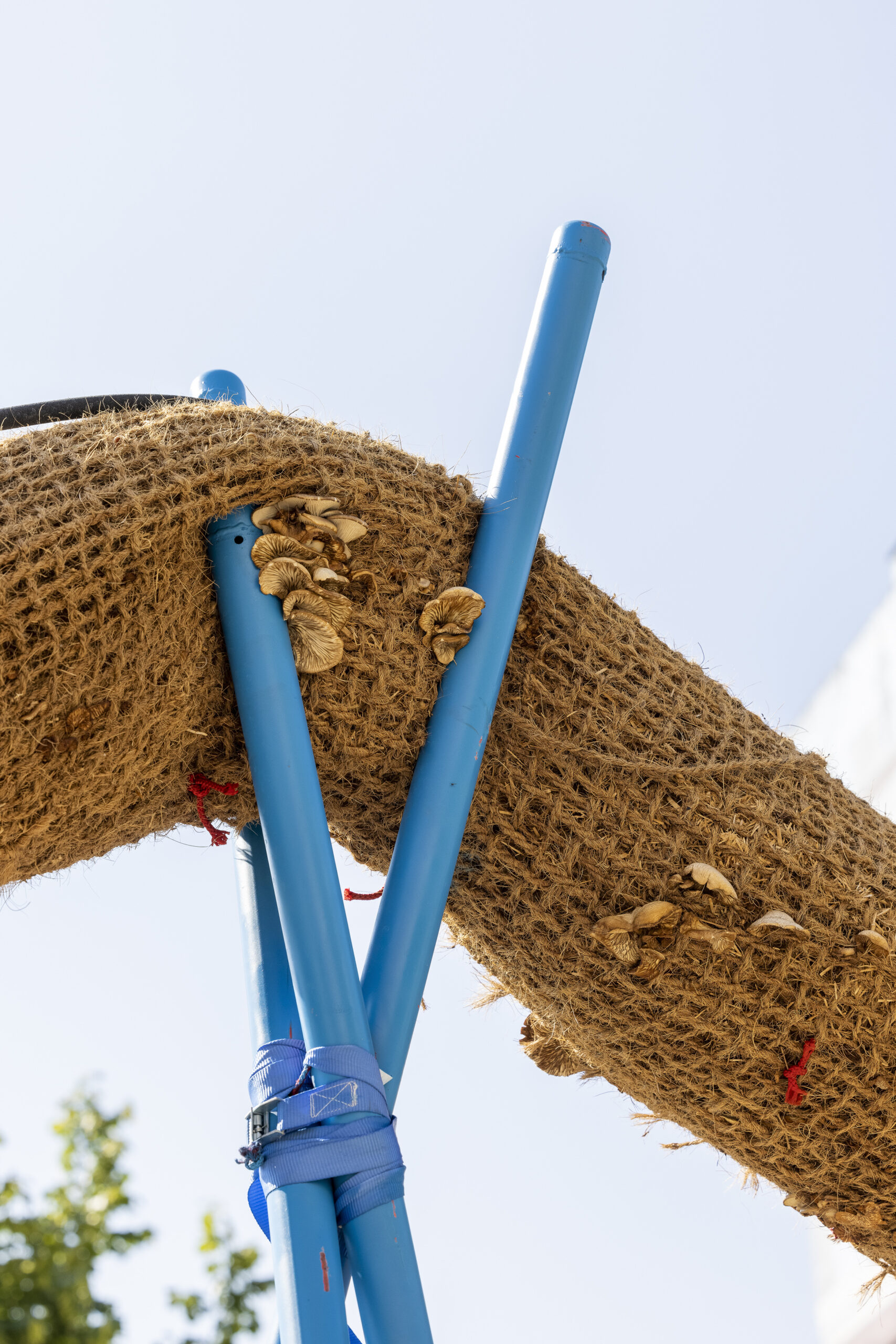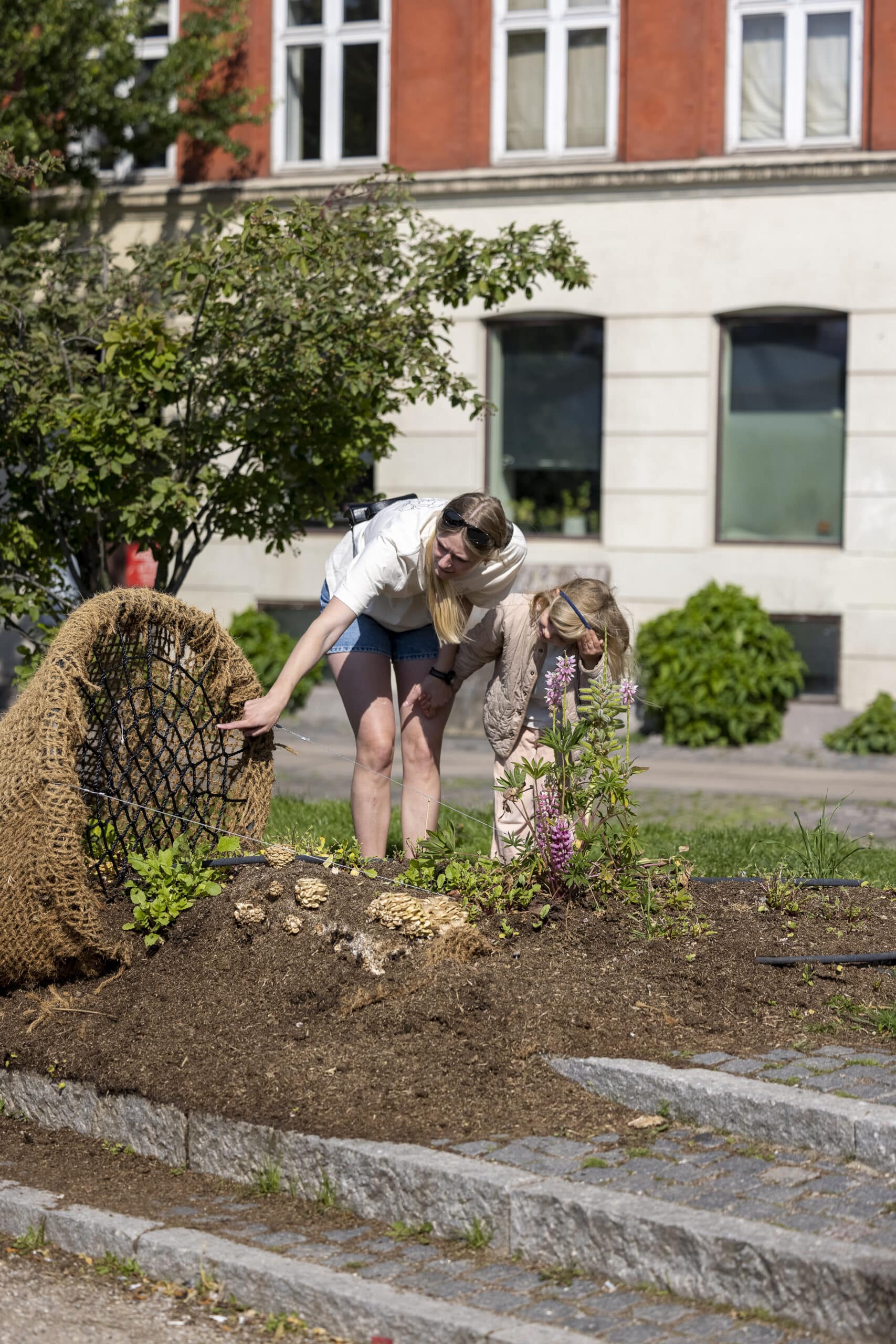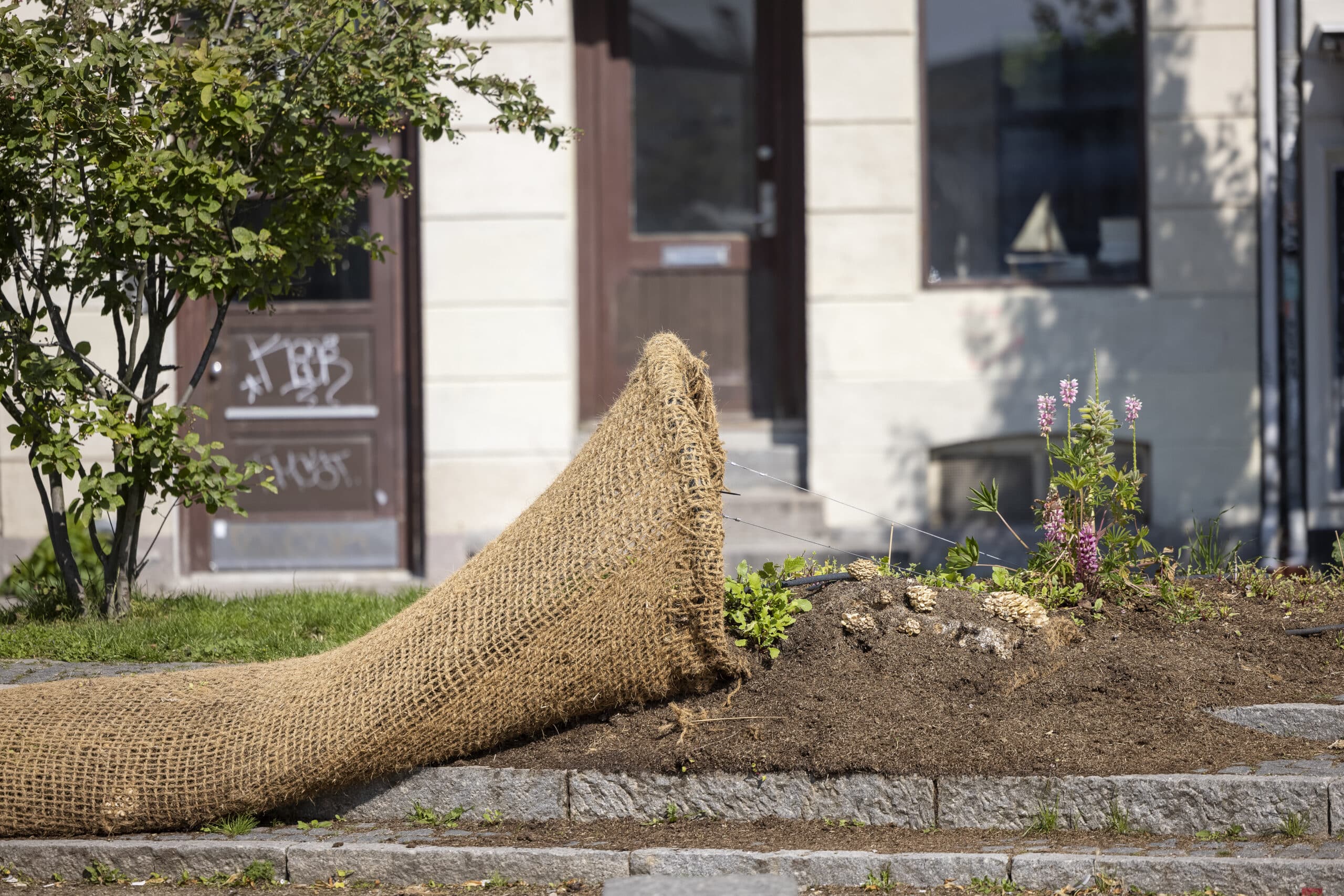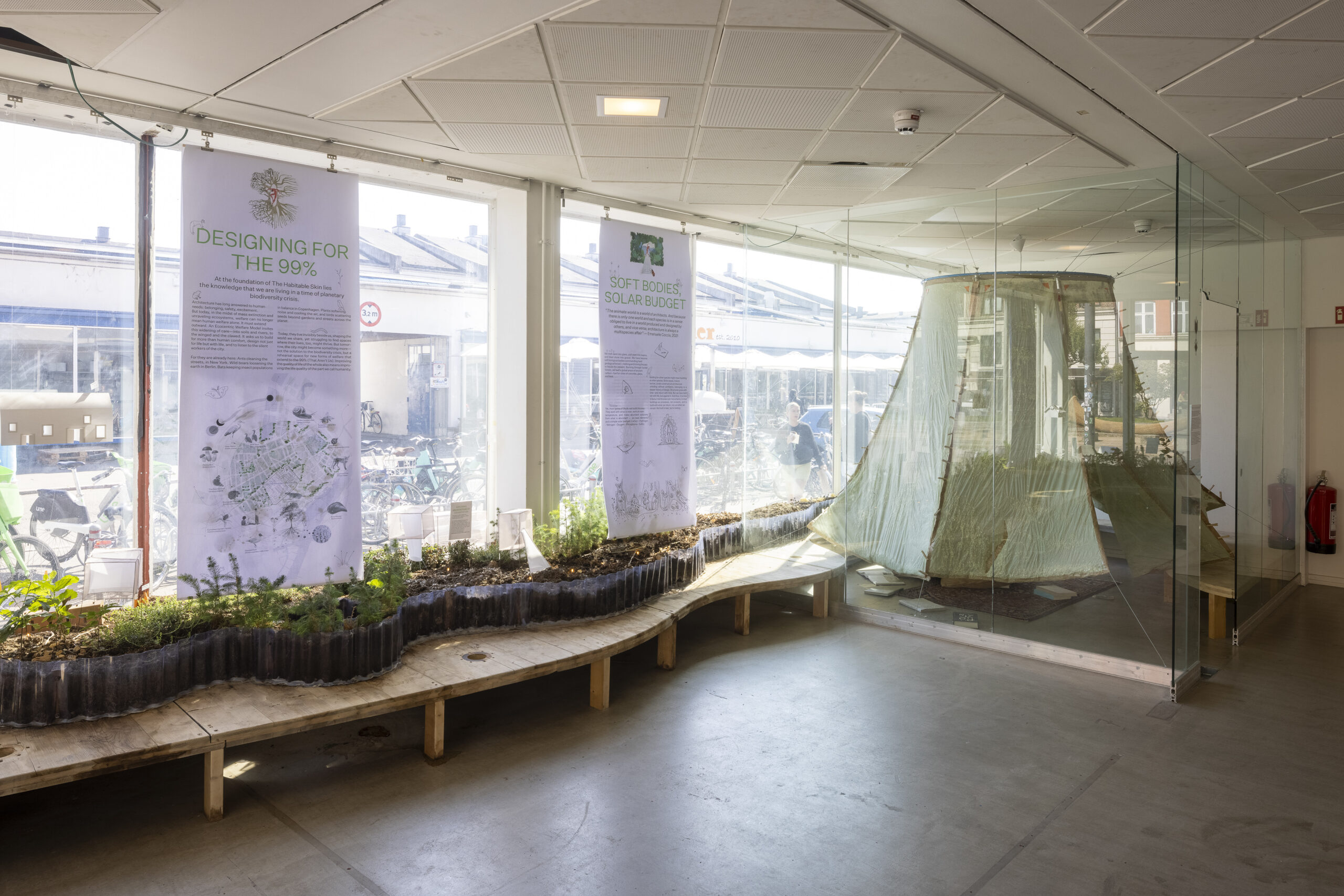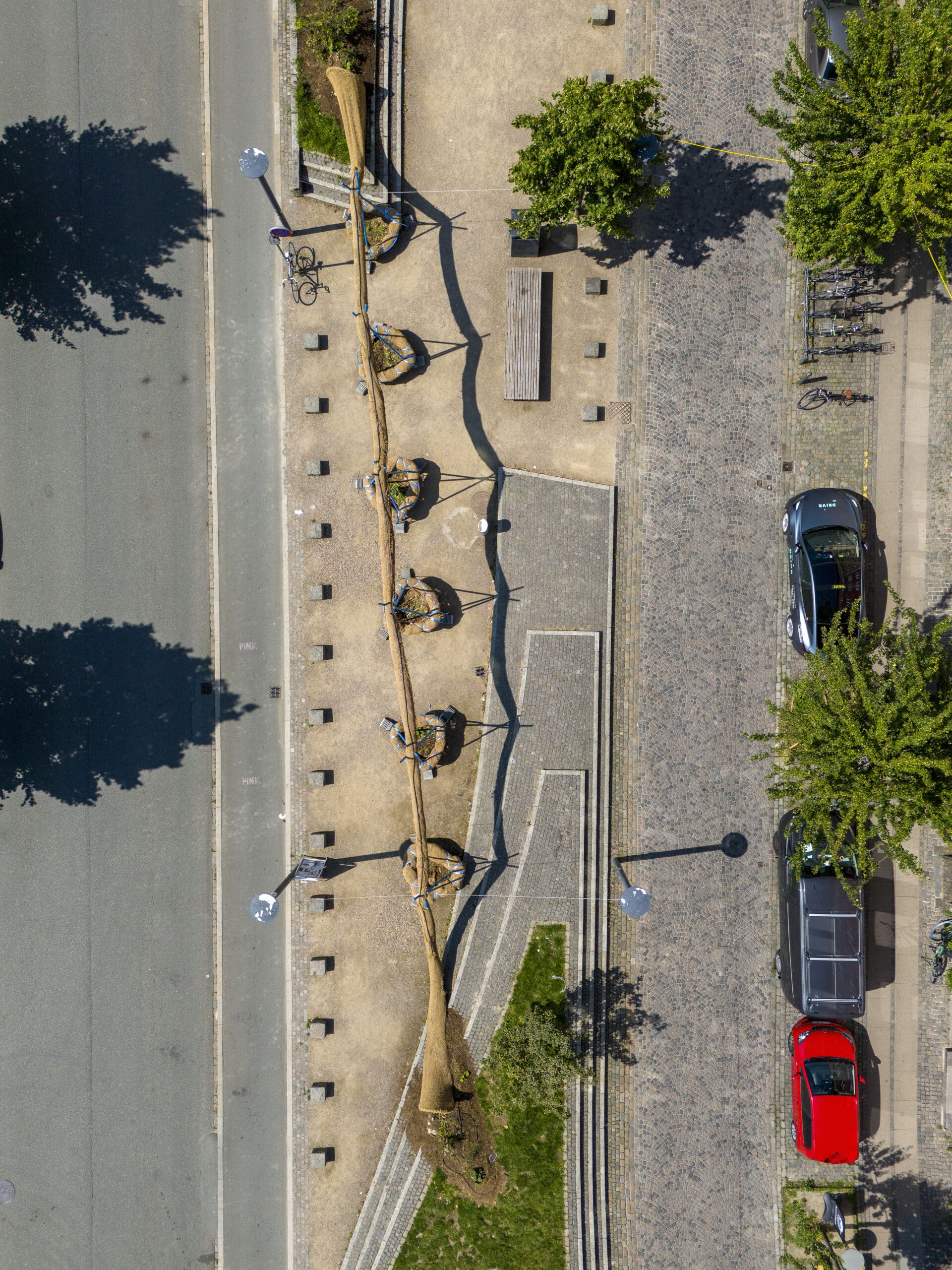-
Exploring a building skin that sustains life
The Habitable Skin
The Habitable Skin is an exhibition that reimagines the boundary as architecture’s most critical ecological nexus – not as a line of separation, but as a space of interaction. It asks what it would mean for the skin to be habitable – not only for humans, but for other forms of life? To create a skin that lets in rain, sound, light, breath – offering space for coexistence.
To rethink the skin is to rethink the role of architecture itself, not as a shelter from the world but as a medium within it – situated, sensory and capable of coexistence. By centering coexistence as a design principle, we explore this as a possibility but also a responsibility. The Habitable Skin is a living architectural experiment creating interactions and knowledge as species live together.
The concept was originally conceptualized and shortlisted for the Danish Pavilion, Venice Biennale 2027, in a collaboration between Studio Coquille, TERROIR, Professor Ellen Braae and PhD fellow Taryn Humphrey.
- TYPE Public | Exhibitions
- LOCATION Copenhagen | DK
- YEAR 2025
- WITH
APPROACH
With a natural bridge for insects linking green spaces in the urban fabric, bypassing roads to directly connect parks and the indoors, the Habitable Skin asks how we might design with space and time rather than against them. The exhibition shows how facades, walls, roofs and floors can become shared surfaces - porous, responsive and alive - while reminding us of our role as we live among other species.
